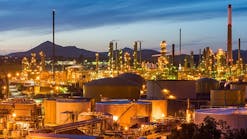Better transportation seen as key to North American energy promise
Significant transportation improvements will be essential for North America to fully realize its dramatically brighter oil and gas future, speakers agreed during a Nov. 6 discussion at the Woodrow Wilson International Center for Scholars.
Global production growth has moved into the Western Hemisphere, while demand increases have shifted east, according to Jan H. Kalicki, a Wilson Center public policy scholar who leads its regional and global energy issues program. “We need to better define North American prospects all the way from the Arctic to the Caribbean,” he said.
Problems range from bottlenecks between US tight-oil producers and refineries configured for their crude, to financing for pipelines to move surplus natural gas to Mexico and elsewhere, the speakers indicated. Obstacles keeping new US crude production from reaching global markets potentially could limit its growth, they warned.
Policy signals are needed to encourage crude oil pipeline projects because they take 2 years to build, noted David L. Goldwyn, president of Goldwyn Global Strategies LLC. “If global prices stay low, US prices could start climbing closer,” he said.
“Price differentials may slow drilling down in some US areas,” added Shirley Neff, a senior advisor at the US Energy Information Administration. “Some prospects were drilled to hold leases. That’s slowing down.”
At least one pipeline
“If prices stayed at $80-90/bbl for the next few years, US and Canadian growth will continue,” said Robert Johnston, chief executive at Eurasia Group. With some Canadian oil sand projects canceled because of little pipeline access, he said that at least one of four major pipelines—Keystone XL, Energy East, Trans Mountain, and Gateway—must be approved by 2016 for growth to continue there.
Pipeline and infrastructure challenges materialized in the US because unconventional production grew so quickly, Neff observed. Surging production from the Bakken shale has led to pipeline construction and reversals, and rail’s emergence as an interim alternative, she said.
“We have somewhat of a mismatch between crude quality and refining preferences,” Neff said. “Refiners have some flexibility, but there’s a fair expectation that large amounts of heavy crude will come from deepwater sources.”
Problems for gas range from New England’s reluctance to allow pipelines into the area from relatively close production in Pennsylvania to getting crude-associated gas from the wellhead to markets, she said.
About the time Cheniere Energy’s LNG export operation begins in late 2015 or early 2016, the Panama Canal’s expansion will become capable of handling all but the biggest tankers, allowing more US LNG to be shipped to Asian customers, Neff said.
Mexico moves quickly
Mexico’s energy reforms are moving ahead quickly out of political and economic necessity, Goldwyn noted. In addition to allowing foreign participation in exploration and production, a possibly more significant trend is moving to gas from diesel fuel for power generation, which would help make manufacturing there more competitive, he said.
“This creates a significant North American integration opportunity,” Goldwyn said. “We can do it more easily with Mexico and should consider how to invest there. The Caribbean is more challenging, but deserves a closer look. It all comes down to pipeline and exports. We need to determine whether we’ll be willing to make those choices.”
Charles K. Ebinger, a senior fellow and director of the Brookings Institution’s Energy Security Initiative, said infrastructure development is particularly critical if oil and gas E&P is to proceed in North America’s Arctic.
“I realize results of [the Nov. 4] elections may lead to more members of Congress denying it, but the impacts are most obvious up there as rising water threatens coastal communities and melting polar ice creates new shipping lanes,” he said.
More cruise ships going farther north now without proper polar modifications could create the potential for one to sink with 500-600 passengers on board without adequate rescue response infrastructure nearby, Ebinger warned.
Contact Nick Snow at [email protected].

Nick Snow
NICK SNOW covered oil and gas in Washington for more than 30 years. He worked in several capacities for The Oil Daily and was founding editor of Petroleum Finance Week before joining OGJ as its Washington correspondent in September 2005 and becoming its full-time Washington editor in October 2007. He retired from OGJ in January 2020.

